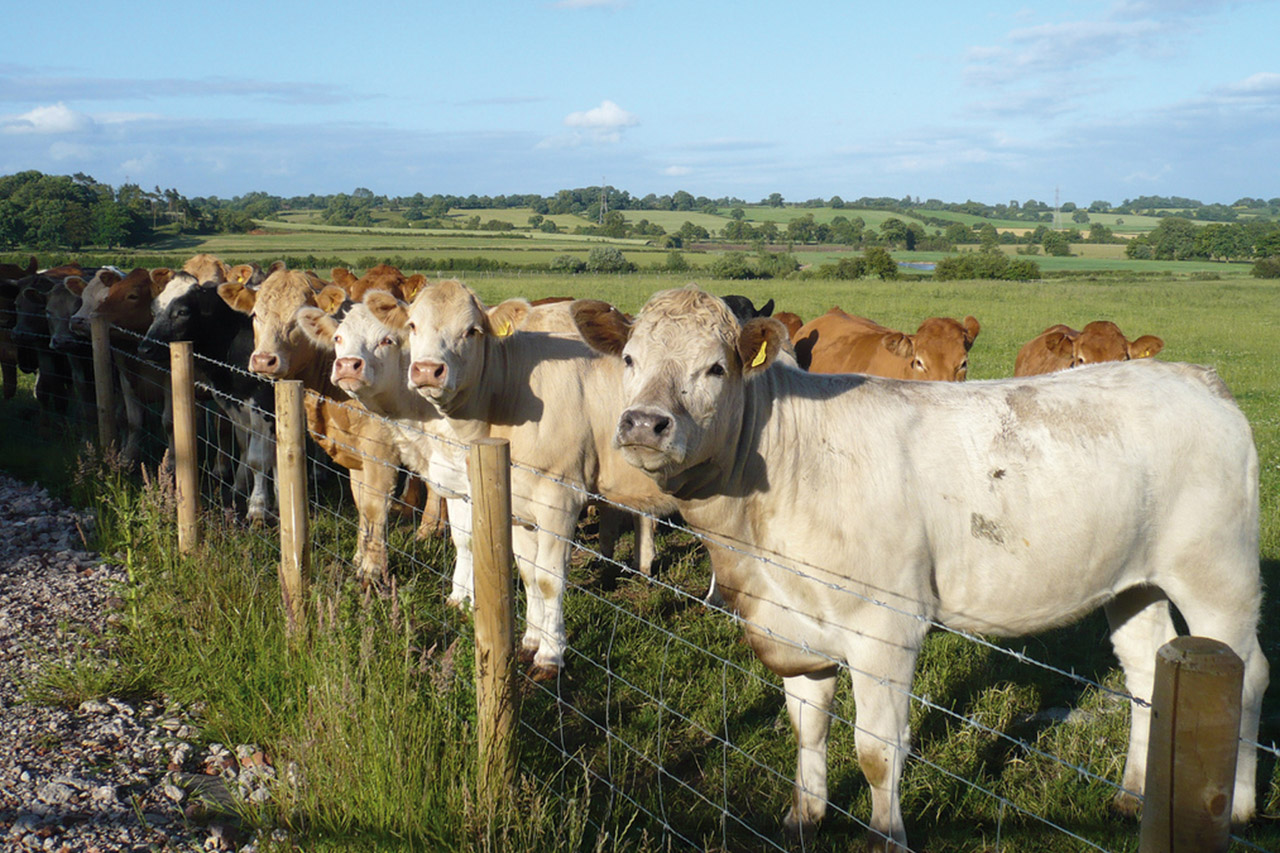Description
The Staffordshire Cheese PDO is made from the milk from cows breeded on local farms.
Production Area
Staffordshire Cheese PDO is made in the county of Staffordshire in the West Midlands of England.
Production Method
The first phase in making this cheese consists in leaving the milk over night at a temperature of between 0°C and 5°C and the following day it is pasteurised with the addition of cream from the same quality of milk. Lactic acids are then added, followed by rennet after 60-75 minutes and the milk is left to coagulate for approximately 50 minutes. The curd thus obtained is then cut and the whey is drained off and then it is broken every 15 minutes to increase the level of lactic acid, which passes from 0,39% after the first cut to 0,45% after the second and 0,53% after the last. The curd is then broken once again in a stainless steel mill during which time the salt is added by turning once with a plastic shovel and three times by hand. Lastly the curd is placed by hand into stainless steel moulds lined with a muslin cloth and pressed over night at a temperature of 21°C to 25°C. After pressing the cloth covers the surface of the cheeses perfectly and they are left to mature for a period of a maximum of 12 months during which period they are turned regularly.
Appearance and Flavour
Staffordshire Cheese PDO is a cylindrically shaped cheese with a smooth, hard or semi-hard and slightly crumbly texture, depending on the degree of maturity. It is off-white in colour and has a fresh, creamy, lactic flavour.
History
The history of Staffordshire Cheese PDO is linked to the tradition of cheese making by Cistercian monks who settled in this county in the 13th century and dedicated themselves to growing their own food and making their own cheese. Cheese making continued through the centuries until it was interrupted by both the start of the Second World War and the establishment of the Milk Marketing Board with its policy of centralising the collection of milk, leading to a distinct decline in the production of local cheeses. Luckily today Staffordshire Cheese PDO has been revived and has re-established its reputation.
Gastronomy
Staffordshire Cheese PDO must be kept in a cool place and if it is already cut should be wrapped in foil and kept in the refrigerator. It can be eaten just as it is with an aperitif but also as an elegant addition to first or main courses. There are local recipes in which it is used with game.
Marketing
This cheese is sold as Staffordshire Cheese PDO in two varieties: the first has been matured between two and four months and has a sweeter taste and the more mature variety which is aged for a maximum of 12 months. They are sold whole, wrapped in cloth, in weights of between 8 kg and 10 kg, or in smaller cuts of varying weights.
Distinctive Features
Staffordshire Cheese PDO owes its distinctive characteristics to the temperate, westerly climate and the rich pastures typical of this area which confer a very high quality and particular creaminess to the milk used in its making. Also the combination of starter cultures used and the size of the cheese itself give this cheese its distinctive flavour and consistency.





